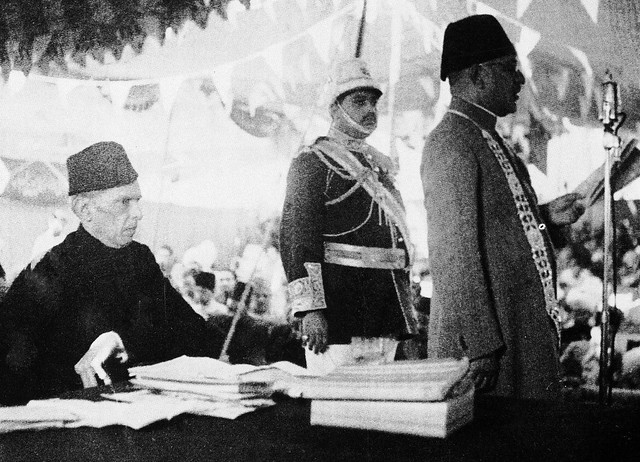A. Molana Zafar Ali Khan
B. A K Fazal Haq
C. Shah Nawaz Mamdot
D. None of these
C. Shah Nawaz Mamdot
The Lahore Resolution of 1940, also known as the Pakistan Resolution, stands as a defining moment in the history of South Asia, shaping the course of the Indian independence movement and leading to the eventual creation of Pakistan. The resolution was passed on March 23, 1940, during the annual session of the All India Muslim League held in Lahore, under the leadership of Mohammad Ali Jinnah. This event not only marked a turning point in the political aspirations of the Muslims of British India but also solidified the demand for a separate nation where Muslims could practice their beliefs freely and secure their socio-political rights.
The session was a large gathering of prominent Muslim leaders from various parts of India, and it attracted thousands of supporters. The welcome address for this historic session was delivered by Shah Nawaz Mamdot, a notable member of the All India Muslim League and the chairman of the reception committee.

As the son of Mian Muhammad Nawazish Ali Khan, an influential figure in Punjab, Shah Nawaz Mamdot played an instrumental role in organizing the session and rallying support for the League’s objectives. His speech welcomed the delegates, acknowledging the need for unity among Muslims and setting the tone for the critical discussions that would follow.
At the heart of the resolution was the demand for an independent Muslim-majority state, distinct from Hindu-majority regions. The resolution was originally drafted by Sikandar Hayat Khan, the Premier of Punjab, and presented by A.K. Fazlul Huq, the Prime Minister of Bengal. It proposed that the Muslim-majority areas in the northwestern and eastern zones of British India should be “grouped” to form “independent states” in which Muslims could enjoy freedom, equality, and social justice.
In his presidential address, Mohammad Ali Jinnah emphasized the concept of “two nations,” arguing that Hindus and Muslims were two distinct communities with their own religious, social, and cultural identities. Jinnah argued that these differences made it impossible for both communities to live together under a single government without compromising their respective identities. His speech reinforced the idea that Muslims needed a separate homeland to secure their rights and preserve their way of life.
The Lahore Resolution was met with widespread support among Muslims, who felt marginalized by the political and social dominance of Hindus in British India. It created a unified voice among Muslims from various provinces, bringing together leaders from Bengal, Punjab, Sindh, the North-West Frontier Province, and beyond. It also became a powerful statement of Muslim solidarity, as it underscored the resolve of Muslims to determine their political future independently of Hindu-majority interests.
The resolution faced strong criticism and opposition from Hindu leaders and the Indian National Congress, who saw it as a threat to their vision of a united India. However, the idea of a separate Muslim state gained momentum, with the resolution serving as a rallying point for Muslims across British India. Over the years, the Lahore Resolution became a symbol of Muslim identity and unity, fueling the demand for Pakistan. Eventually, on August 14, 1947, Pakistan emerged as an independent country, realizing the aspirations outlined in the resolution.
Today, March 23 is celebrated annually in Pakistan as Pakistan Day to commemorate the passing of the Lahore Resolution and honor the efforts of leaders like Mohammad Ali Jinnah and Shah Nawaz Mamdot, whose contributions paved the way for an independent homeland for Muslims. The Lahore Resolution remains a landmark in South Asian history, symbolizing the struggles and aspirations of a community determined to achieve self-determination and freedom.
Submitted by: Admin
